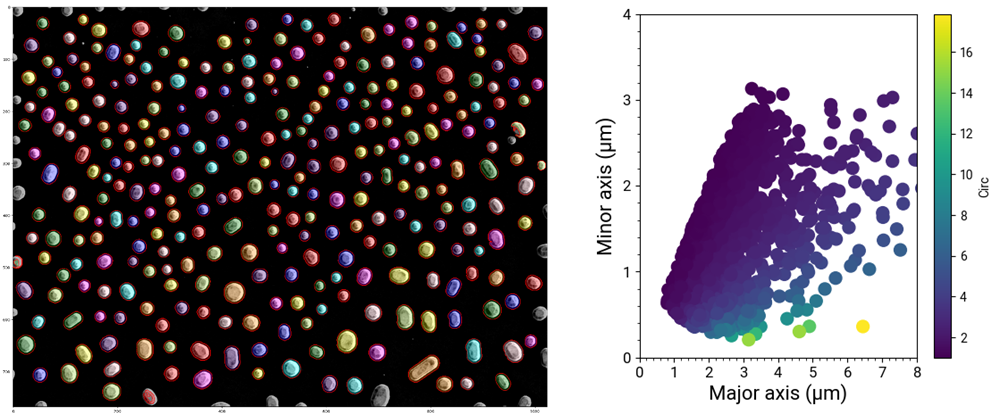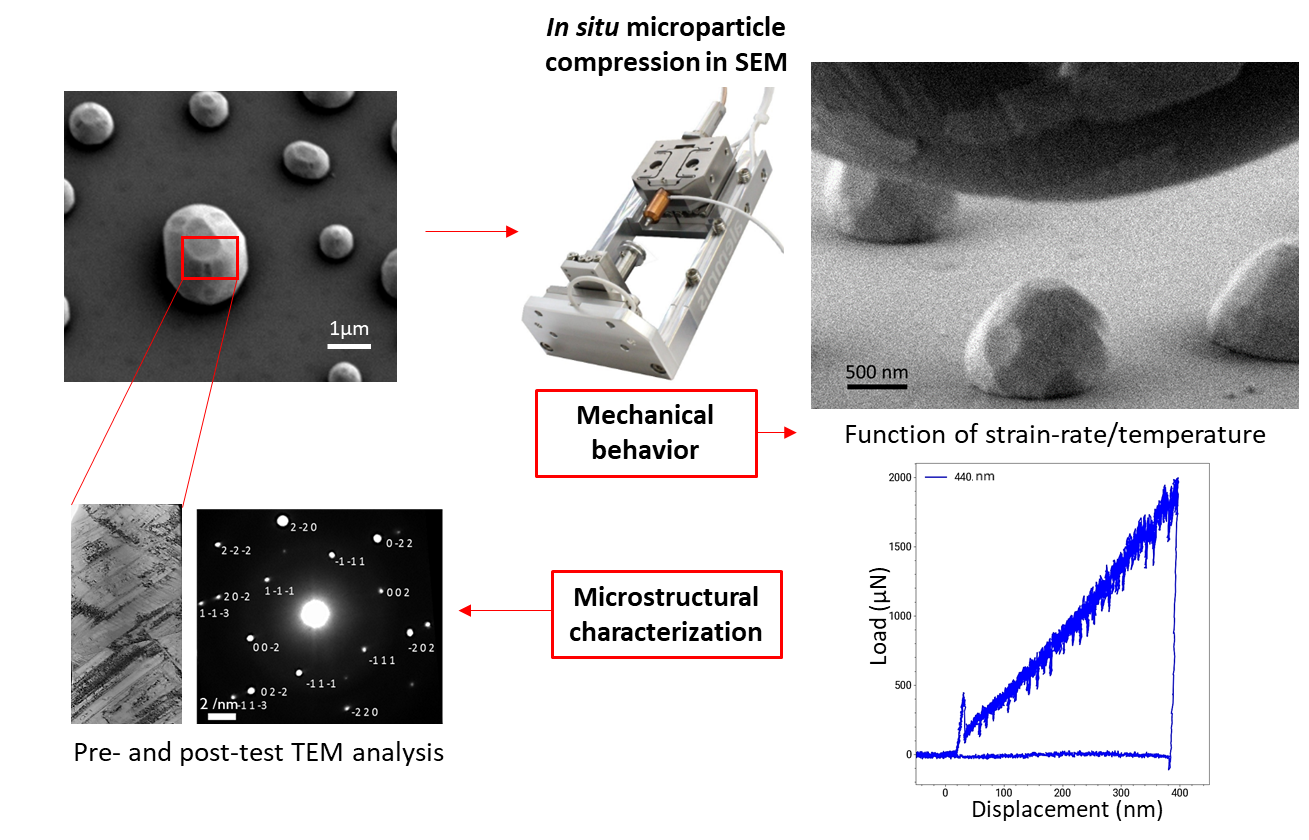Dynamic thermomechanical testing of dewetted microparticles
Smaller is stronger” is well known in micromechanics, but the properties far from the quasi-static regime and the nominal temperatures remain unexplored. This research will bridge this gap on how materials behave under the extreme conditions of strain rate and temperature, to enhance fundamental understanding of their deformation mechanisms. The mechanical behavior of metals with different crystal topologies, i.e. FCC, BCC and HCP and alloy systems, will be investigated in a statistically relevant manner using dewetted microparticles as the test-beds.
Micro and nano scaled materials have been increasingly used several new technological applications. It is well known that materials exhibit “smaller is stronger” behavior, but the properties far from the quasi-static regime and the nominal temperatures are not yet understood. This research will bridge this gap on how materials behave under the extreme conditions of strain rate and temperature, to enhance fundamental understanding of their deformation mechanisms. Bridging this gap is also essential to test the reliability of small-scale metal parts in miniaturized and impact dependent applications.
Specifically, in this project the behavior of metals with different crystal topologies, i.e. FCC, BCC and HCP and alloy systems such as FeAl will be investigated. To have a statistically relevant study, pristine micro-particles obtained from dewetting of thin films will be in situ tested inside an SEM, using a state-of-the-art nanoindenter capable of true displacement control. This testing platform allows the strain rates to be varied from 0.0001/s to 1000/s, along with the ability to heat (upto 800°C) or cool down (upto -150°C) the sample during the experiment.
.

Morphological characterization of the dewetted microparticles. Left: Segmented image of the microparticles using Python programming. Right: Measurements of major and minor axis and circularity of over 1600 particles.
Specifically, in this project the behavior of metals with different crystal topologies, i.e. FCC, BCC and HCP, will be investigated. To have a statistically relevant study, pristine metallic micro-particles obtained from dewetting of thin films will be in situ tested inside an SEM, using a state-of-the-art nanoindenter capable of true displacement control. This testing platform allows the strain rates to be varied from 10-4 /s to 1000 /s, along with the ability to heat (upto 800°C) or cool down (upto -150°C) the sample during the experiment.

Experimental process flow for the mechanical characterization of micro-particles.













